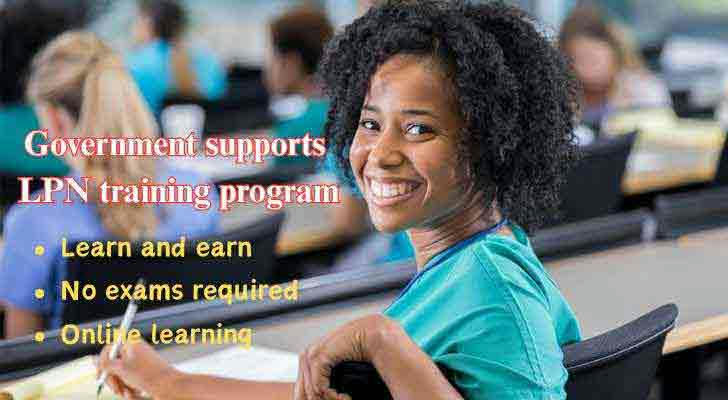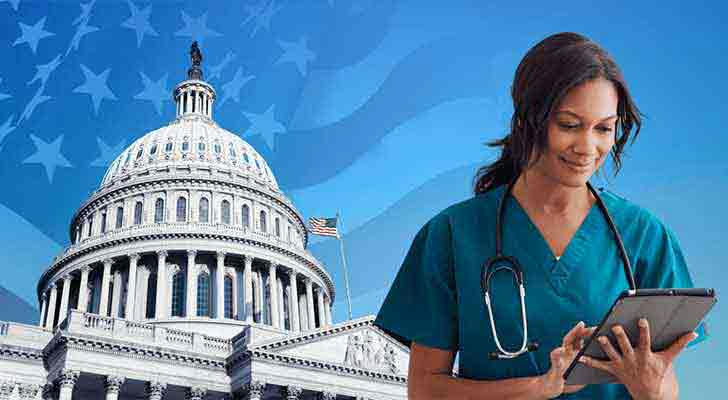Government-Supported Online LPN Programs: A Flexible Pathway to a Nursing Career
#GovernmentSupport #EarnWhileYouLearn #OnlineNursing #NoExperienceNeeded
For individuals seeking a career that combines purpose, long-term job security, and accessible training, becoming a Licensed Practical Nurse (LPN) has become an increasingly popular choice. With government-backed online LPN programs now available, many students can begin this path without prior healthcare experience.

🏛️ What Does Government Support for LPN Training Actually Mean?
Government-supported LPN programs are designed to reduce the financial and logistical barriers that often prevent adults from entering the healthcare field. Several funding mechanisms may apply, including:
- Workforce Innovation and Opportunity Act (WIOA) – Offers tuition assistance for in-demand careers like nursing
- Federal Pell Grants – For eligible low- to moderate-income students pursuing postsecondary education
- Veterans’ Education Benefits – Such as the GI Bill®, which covers many healthcare-related training costs
- State healthcare workforce development programs – May include stipends, transportation vouchers, or clinical training subsidies
Programs that qualify for these benefits often cover a significant portion of tuition and supplies, and in some cases, even offer compensation during clinical rotations.
💻 Why Are Online LPN Programs So Popular Right Now?
Online LPN programs—offered by accredited institutions such as Herzing University—combine digital flexibility with real-world clinical training, offering the best of both worlds.
Study Anywhere, Anytime Courses are delivered in an asynchronous format, which means students can complete assignments and view lectures on their own schedule. This is ideal for full-time employees, parents, or career switchers managing other responsibilities.
Local Clinical Practice, Real-World Readiness While coursework is online, clinical rotations take place in local healthcare settings. These experiences help students apply theory in practice, often in the same communities where they’ll eventually work. Some programs may even offer stipends during clinicals, depending on local partnerships and funding availability.
📚 What Will You Learn in a Government-Backed LPN Curriculum?
LPN training is practical, fast-paced, and structured around real-world competencies. Students will encounter a range of essential topics, including:
| Subject | What You’ll Learn |
|---|---|
| Nursing Fundamentals | Bedside procedures, hygiene support, patient monitoring |
| Anatomy & Physiology | Body systems, disease processes, terminology |
| Pharmacology | Medication administration, side effects, dosage safety |
| Geriatric Nursing | Elderly care, fall prevention, chronic illness management |
| Maternal & Pediatric Care | Prenatal health, infant growth, child-family communication |
| Mental Health Nursing | Behavioral support, communication strategies |
| NCLEX-PN Preparation | Exam drills, clinical scenarios, test-taking techniques |
Graduates from accredited programs are eligible to sit for the NCLEX-PN—the national exam required to obtain a license as a practical nurse.
🏥 Where Do LPNs Typically Work After Graduation?
Licensed Practical Nurses are employed in a broad spectrum of healthcare settings, including:
- Hospitals and rehabilitation centers
- Long-term care and nursing homes
- Outpatient clinics and private practices
- Home health agencies
- Public schools and pediatric centers
- Community-based care programs
This variety allows LPNs to match their work environments with their personal preferences—whether that means a steady daytime schedule in a clinic or flexible shifts in a residential care facility.

🚀 How to Get Started: A Four-Step Plan
Step 1: Search for State-Approved LPN Programs Use terms like “WIOA LPN training + [your state]” or explore offerings from Herzing University and other accredited providers.
Step 2: Review the Requirements Most programs ask for a GED or high school diploma, a background check, and U.S. work eligibility.
Step 3: Apply for Financial Aid Many schools provide guidance on accessing grants, veteran benefits, or employer reimbursement options.
Step 4: Begin Online Coursework + Clinical Rotations Start learning from home and then transition into supervised local training, fulfilling both academic and licensing requirements.
Basic Requirements: ✅ Must be 18 years or older ✅ High school diploma or equivalent (GED) ✅ Minimum service period required
🔍 Final Thoughts

Government-supported online LPN programs are helping thousands of Americans gain critical skills, transition into healthcare roles, and contribute meaningfully to their communities. With flexible study formats, strong job outlooks, and accessible pathways—even for those with no prior experience—this route offers an empowering step toward a new future.
Whether you're a parent, a recent graduate, or someone ready for a fresh start, the opportunity to train as an LPN has never been more within reach.
🔗 Government support for paid training in 2025
🔗 This is not just a job, this is the future.
🔗 See more
